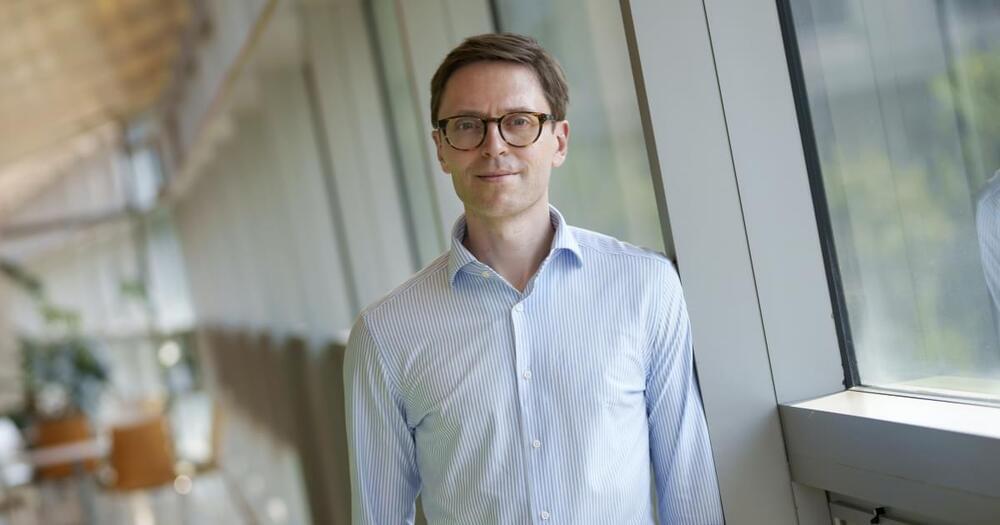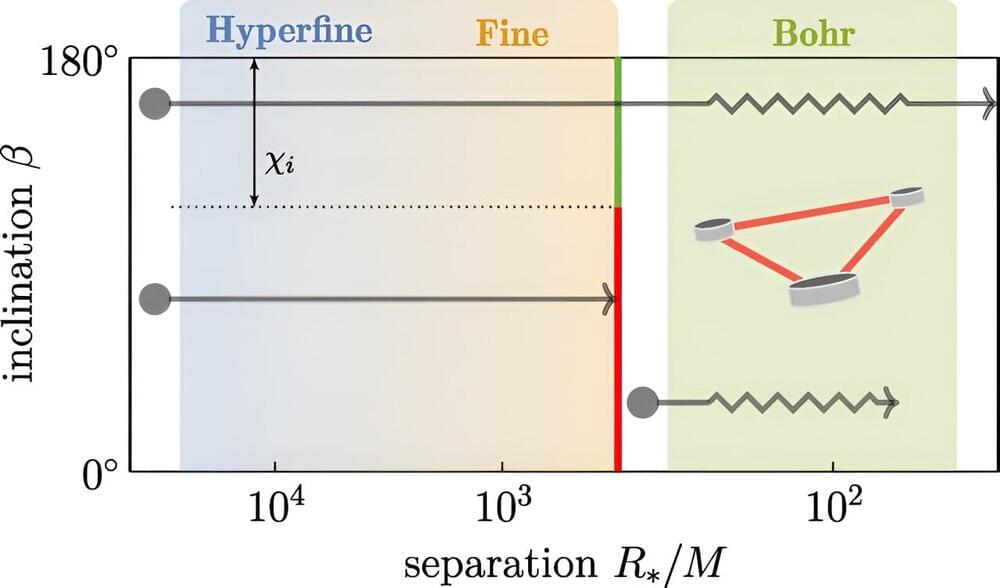Top quarks and antiquarks produced in the Large Hadron Collider are entangled, a study shows.



Even those of us who aren’t physicists have an intuitive understanding of classical physics — we can predict what will happen when we throw a ball, use a salad spinner, or ease up on the gas pedal.
But atomic and subatomic particles don’t follow these ordinary rules of reality. “It turns out that at really small scales there are a different set of rules called quantum physics,” said Travis Nicholson. “These rules are bizarre and interesting.” (Think Schrodinger’s cat and Einstein’s “spooky action at a distance.”)
Nicholson is an assistant professor with joint appointments in Physics and Electrical and Computer Engineering. The physicist in him likes doing experiments to advance our knowledge of quantum mechanics; the engineer in him likes figuring out how to harness that knowledge to build quantum computers that will be vastly more powerful than today’s computers.

MIT physicists and colleagues have created a new material with unusual superconducting and metallic properties, thanks to wavy layers of atoms only billionths of a meter thick that repeat themselves over and over to create a macroscopic sample that can be manipulated by hand. The large size of the sample makes it much easier to explore its quantum behavior, or interactions at the atomic scale that give rise to its properties.

Scientists have long known that electrons are indivisible fundamental particles. Yet surprising new research shows that a weird feature of quantum mechanics can be used to produce objects that behave like half of an electron. These ‘split-electrons’ might hold the key to unlocking the power of quantum computation.
Recently published in Physical Review Letters (“Many-Body Quantum Interference Route to the Two-Channel Kondo Effect: Inverse Design for Molecular Junctions and Quantum Dot Devices”), the discovery was made by Professor Andrew Mitchell at University College Dublin (UCD) School of Physics, and Dr Sudeshna Sen at the Indian Institute of Technology in Dhanbad, who are theoretical physicists studying the quantum properties of nanoscale electronic circuits.
“The miniaturization of electronics has reached the point now where circuit components are just nanometers across. At that scale, the rules of the game are set by quantum mechanics, and you have to give up your intuition about the way things work,” said Dr Sen. “A current flowing through a wire is actually made up of lots of electrons, and as you make the wire smaller and smaller, you can watch the electrons go through one-by-one. We can now even make transistors which work with just a single electron.”
Researchers at the University of Cambridge have developed simulations based on quantum entanglement that mimic the effects of hypothetical backward time travel, allowing experimentalists to retroactively adjust past actions. By manipulating entangled particles, they aim to solve complex problems in quantum metrology, such as improving experiment outcomes even when optimal conditions are only known after the fact. Although this approach doesn’t allow actual time travel, it uses the principles of quantum mechanics to refine scientific experiments and achieve better results in a controlled and probabilistic manner.
YouTube Membership: / @eventhorizonshow.
Podcast: https://anchor.fm/john-michael-godier…
Apple: https://apple.co/3CS7rjT
More JMG
/ johnmichaelgodier.
Want to support the channel?
Patreon: / eventhorizonshow.
Follow us at other places!
@JMGEventHorizon.
Music:

A long-standing prediction of quantum electrodynamics is that high-energy photons can scatter off each other. However, this process has yet to be observed because dedicated experiments have an extremely low signal-to-noise ratio. Now Alexander Macleod at the Extreme Light Infrastructure, Czech Republic, and Ben King at the University of Plymouth, UK, have designed an experiment that could achieve a high-enough signal-to-noise ratio to measure the phenomenon [1]. Researchers could use such measurements to derive the values of fundamental constants in quantum electrodynamics and then set constraints on various extensions to the standard model of particle physics.
Conventionally, scientists have looked for evidence of photon–photon scattering by colliding pairs of laser beams. Macleod and King instead propose colliding three laser beams: an x-ray beam and two high-power optical beams. The two optical beams provide the photons that scatter off each other, and the x-ray beam imparts a momentum kick to the scattered photons. This kick alters the trajectory of the photons and spatially separates them from much of the experimental background. As a result, in the detection region, the signal-to-noise ratio is higher than that of two-beam setups.
Macleod and King consider how their setup could be realized in two currently existing research facilities: the European X-Ray Free-Electron Laser facility in Germany, as part of the planned BIREF@HIBEF experiment, and the SPring-8 Angstrom Compact Free Electron Laser in Japan. They then show how the technology used in these facilities should be sufficient to measure photon–photon scattering. Macleod says that such a demonstration would be important for researchers working on “high-power lasers, strong-field physics, and quantum electrodynamics.”

Gravitational-wave signals from black hole mergers could reveal the presence of “gravitational atoms”—black holes surrounded by clouds of axions or other light bosons.
Subrahmanyan Chandrasekhar famously stated that black holes are “the most perfect macroscopic objects there are in the Universe: The only elements in their construction are our concepts of space and time.” His observation relates to the fact that astrophysical black holes, as described by the Kerr spacetime, can be characterized by just two parameters: mass and spin. However, things might get more complex. Theorists have predicted that if a bosonic field interacts with a Kerr black hole, perturbations in the field can grow to form a cloud around the black hole, creating a “gravitational atom,” in which the bosons surrounding the black hole behave somewhat like the electrons surrounding an atomic nucleus [1] (Fig. 1). What’s more, if such a gravitational atom is part of a binary involving a second black hole, excitations and ionization processes akin to those occurring in hydrogen atoms may affect how the black hole binary evolves.


Deep inside what we perceive as solid matter, the landscape is anything but stationary. The interior of the building blocks of the atom’s nucleus—particles called hadrons that a high school student would recognize as protons and neutrons—are made up of a seething mixture of interacting quarks and gluons, known collectively as partons.

In a paper published in Physical Review Letters this week, physicists from Amsterdam and Copenhagen argue that close observations of merging black hole pairs may unveil information about potential new particles. The research combines several new discoveries made by UvA scientists over the past six years.